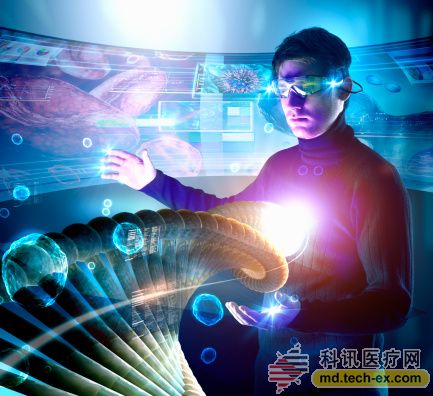Smart industry stepped into fast lane 3D printing biometrics and other help
Release date: 2015-08-19

Following the mobile Internet, the wave of artificial intelligence has begun to rise. In May and June of this year, the State Council successively issued two national strategic level documents, "Made in China 2025" and "Guiding Opinions on Actively Promoting Internet + Actions", and pushed China's smart industry into the track of rapid development. At the "2015 Fifth China Intelligent Industry Summit Forum" held by the China Artificial Intelligence Society in Shanghai, many academicians and experts interpreted the trends and technologies of artificial intelligence, Internet and intelligent manufacturing.
Lu Bingheng, an academician of the Chinese Academy of Engineering, analyzed the "Made in China 2025" and believed that the three technologies supporting smart manufacturing are: robots, smart equipment and 3D printing.
Among them, China's high-end robots and CNC machine tools are in the difficult stage of industrialization, and 3D printing technology is in the initial stage of industrial development and the stage of enterprise staking.
Lu Bingheng believes that 3D printing is in line with the manufacturing process of Industry 4.0. It has brought disruptive changes to the manufacturing industry – product development cycles and costs have doubled, essentially 1/3 to 1/5, and material utilization has increased from 5% to 85%. GE has done a very innovative job of combining 20 parts into one part with 3D printing, improving fuel efficiency by 15%, and the engine has advanced for a generation.
He also believes that China's manufacturing should emphasize three new foundations in basic research: sensors, software, and big data.
Today, big data has become an important asset of human society in the Internet age, and it is called "the oil of the new era." Mobile phones, televisions, cars, and chat bots, as "sensors," provide Internet companies with a steady stream of big data assets. Big data from all walks of life, ranging from TB to PB to EB to ZB, is rapidly evolving with three data-level ladders.
In addition, robots also play an important role in the field of artificial intelligence. Li Deyi, an academician of the Chinese Academy of Engineering, believes that it is not a humanoid robot, but a cloud robot. In the cloud computing data center, with thousands of CPU + GPU server architectures, through the parallel training of large-scale deep learning of large data samples, it is possible to identify artificial nerves with billions of parameters and become artificial intelligence. Big highlights.
"Internet, cloud computing, Internet of Things and big data can strongly support how cloud robots hear, how to see, how to think, and how to solve the robot's action 'smart manufacturing 2025' ushers in the spring of our robots."
Biometrics is also an important part of artificial intelligence. There are 11 “key actions†in the “Guidelines on Advancing the Internet + Actionsâ€. The last one is “Internet + Artificial Intelligenceâ€, which specifically mentions the research and development and industrialization of “biometricsâ€, which is a solid upgrade for the industry. basis.
Baidu is characterized by connecting people and information, Alibaba is connecting people and goods, and Tencent is connecting people and people. Tan Tieniu, vice chairman of the Chinese Society of Artificial Intelligence and academician of the Chinese Academy of Sciences, believes that the essence of "Internet +" is "people-oriented, connecting everything." Since people are the foundation, we must know who this person is, so "biometric" will be the era of intelligence. A key technology.
Tan Tieniu believes that wearable devices contain a huge space for biometric identification. In the future, biometrics will be provided in the form of “cloud†services. The user itself becomes a collection device, and through the collection and exchange of biometric data in smart terminals such as wearable devices, smart cars, smart homes and the like, a cloud database is formed to realize accurate vertical service.
Source: Bio Valley
PCR ( Polymerase Chain Reaction)
It provides a way to make more copies of a portion of DNA.
We need to have PCR ingredients that include DNA portion, Buffer solution, Primer+DNA (tap polymerase), and Nucleotides during the preparation step.
In the step of PCR sequence, there are three steps in this section.
Step 1 Denaturation
The addition of heat is needed to separate the two strands of the DNA molecule.
Step 2 Annealing
Temperature, is going to be cool in this step, should allow the primers to bind to the specific segments.
Step 3 DNA Synthesis
To make more copies of the DNA.
Those three steps above keep repeating to make enough copies of the DNA fragments. It is the principle of how PCR machine works.
Superyears General 2215 RT-qPCRadopts all-in-one with an industrial art design, combining the Analytical Instrument, Large touch screen, and Computer. General 2215 RT-qPCR is equipped with the proven thermal-cooled electric technology, which can recognize the speed rate of temperature control faster and obtain high-quality testing results within 40 minutes. To ensure the sensitivity and stability of the testing a design with traditional beam path with a susceptible CMOS image sensor is used. In addition, General 2215 supports multiple PCR analysis and High-resolution Melt Curve (HRM) analysis, compatible with the mainstream reagent kit in the market. It will be the best assistant and your preferred RT-qPCR.
Rt-Qpcr Instrument,Real-Time Fluorescence Quantitative Pcr Instrument,Real Time Fluorescence Quantitative Pcr System,Fluorescent Quantitative Thermal Cycler Pcr
Nanjing Superyears Gene Technology Co., Ltd. , https://www.superyearsglobal.com